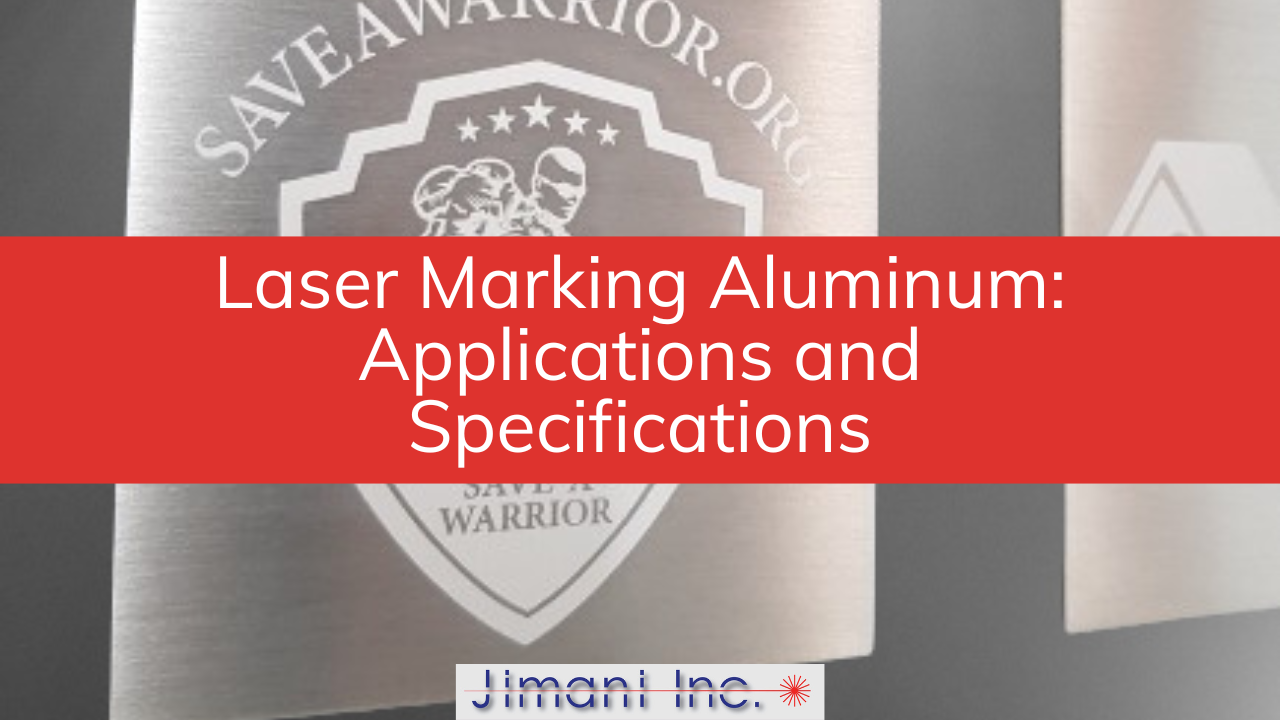Affordable Laser Marking Systems
Not all laser marking applications require a fully featured, top-of-the-line laser system. In fact,...

You'll find aluminum components in virtually every manufacturing sector—from aerospace brackets to medical devices, automotive parts to consumer electronics. When these aluminum parts need identification, traceability, or branding, laser marking delivers the permanent, high-contrast results that other marking methods simply can't match.
Unlike labels that peel or ink that fades, laser marking creates marks that become part of the aluminum surface itself. Whether you're working with bare aluminum, anodized surfaces, or chemical film coatings, fiber lasers can produce everything from subtle surface marks to deep engravings that meet the most demanding specifications.
Aluminum's widespread use comes from its lightweight strength and corrosion resistance, but these same properties that make it valuable also make it challenging to mark permanently. Traditional marking methods often fail on aluminum surfaces—adhesive labels don't survive harsh environments, and mechanical engraving can compromise the material's structural integrity.

Laser marking solves these challenges by creating marks through controlled material interaction. The process removes coatings like anodize or creates textured surfaces that scatter light, producing high-contrast marks without affecting the aluminum's core properties.
Manufacturing operations across multiple industries rely on aluminum laser marking for critical identification and traceability requirements. Aerospace manufacturers mark part numbers and batch codes on aluminum components that must remain readable throughout decades of service. Medical device producers create permanent marks on aluminum housings and components that survive repeated sterilization cycles. Automotive suppliers mark everything from engine components to trim pieces with barcodes and serial numbers that enable supply chain tracking.
The versatility extends beyond industrial applications. Consumer goods manufacturers use laser marking for branding on aluminum products, creating permanent logos and decorative patterns that enhance product appeal while maintaining durability.
Different aluminum surfaces require different laser approaches to achieve optimal results. Anodized aluminum responds particularly well to laser marking because the anodizing layer can be precisely removed to reveal the bright base metal beneath, creating stark white marks against colored backgrounds. Clear anodized or chemical film-coated aluminum produces more subtle marks but still achieves excellent readability.
For applications requiring deeper penetration, laser engraving can create marks several thousandths of an inch deep into the aluminum surface. This approach works well for parts subject to wear or when fill-in marking is required. The marking depth and appearance can be precisely controlled through laser parameters, allowing customization for specific application requirements.
Successful aluminum laser marking depends on understanding the interaction between laser parameters, aluminum type, and marking requirements. Fiber lasers operating at 1064 nanometers provide the ideal wavelength for aluminum marking, offering efficient energy absorption and precise control.
The marking process typically involves two passes for optimal results. The first pass removes any surface coating or creates the initial mark texture using moderate power and speed settings. A second cleanup pass at reduced power brightens the mark and ensures consistent appearance across the marked area.
Hard anodized aluminum presents unique challenges due to its significantly thicker coating and ceramic-like properties. These applications often require higher power lasers and modified techniques to achieve satisfactory results, but the investment in proper equipment pays off in consistent, high-quality marks.
The complexity of aluminum laser marking means success depends on understanding not just the basic process but the specific techniques that work for different aluminum types, coating systems, and application requirements. Our comprehensive guide "Laser Marking Aluminum: Common Applications and Marking Specifications" provides the detailed information you need to implement successful aluminum marking in your operation.
This technical resource covers the essential knowledge for aluminum laser marking success, including detailed application examples from major industries, comprehensive explanations of different marking techniques available for aluminum surfaces, and specific equipment recommendations based on your marking requirements.
Download your free copy of "Laser Marking Aluminum: Common Applications and Marking Specifications" and discover how to achieve permanent, high-contrast marks on aluminum components that meet your exact specifications. Whether you're evaluating laser marking for your operation or optimizing existing processes, this guide provides the technical foundation for successful aluminum marking implementation.
Not all laser marking applications require a fully featured, top-of-the-line laser system. In fact,...
If you are in the market for laser marking machines, you have many options to choose from. The type...
Esterline Control and Communication Systems use fiber lasers to mark numbers, text, and diagrams on...